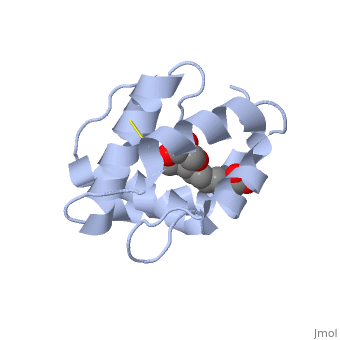As the most ancient sense in nature, smell and chemical communication play a major role in successful mating, host and selection and other essential behaviors.
The detection of volatiles (often a small hydrophobic molecules) starts by
Pheromone binding proteins are soluble proteins invovled in the early stages of pheromone detection.
As a model protein of this family we will further describe the well investigated Pheromone binding protein of the honey bee.
Chemical communication is crucial in social insects, where a complicated and delicate system of signals must be maintained in order to preserve the fragile equilibrium between the queen and the workers.
In the hive of the honey bee Apis mellifera this equilibrium exists partially due to the extraction of blend of substances called queen mandibular pheromone (QMP), by the queen. The three major component of the QMP blend are: 9-keto-2(E)-decenoic acid (9-ODA) and 9-hydroxy-2(E)-decenoic acid (9-HDA R-(−) or S-(+)).
Pheromone-binding protein ASP of the honeybee Apis mellifera L. (Hymenoptera: Apidea) was first isolated and characterized by Danty et al. (1998)[1] from the bee antennae.
or to the article describing Jmol [2] to the rescue.
Structure
The protein has a 1 alpha chain, that can be seen in pink.
Function
The protein ligand, 9-ODA Image:9-ODA.jpg
Structural highlights
This is a sample scene created with SAT to by Group, and another to make of the protein. You can make your own scenes on SAT starting from scratch or loading and editing one of these sample scenes.

